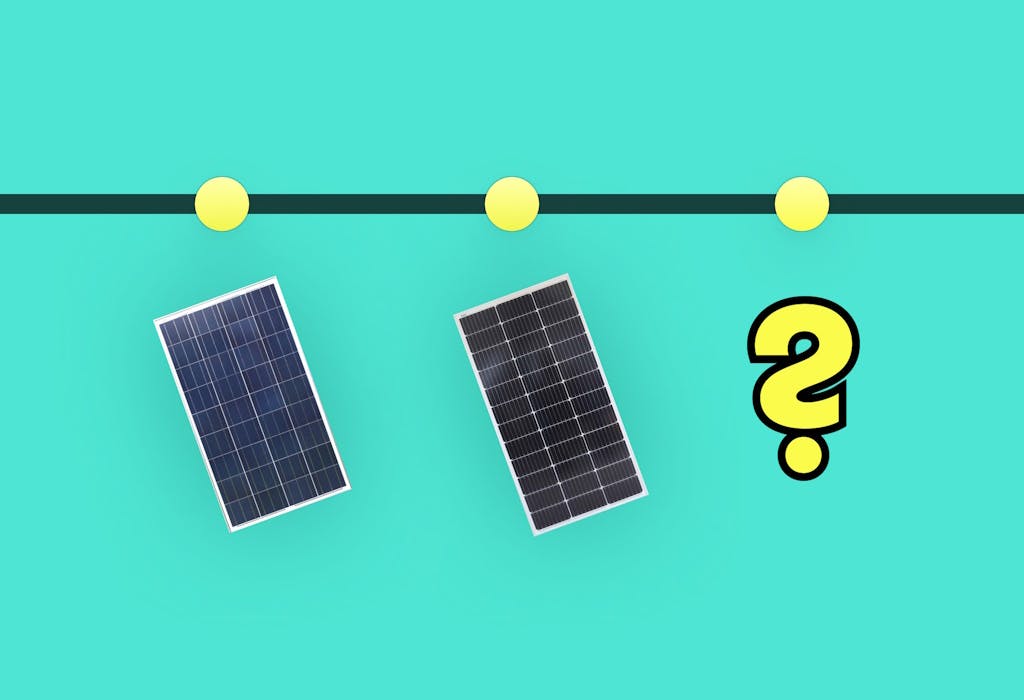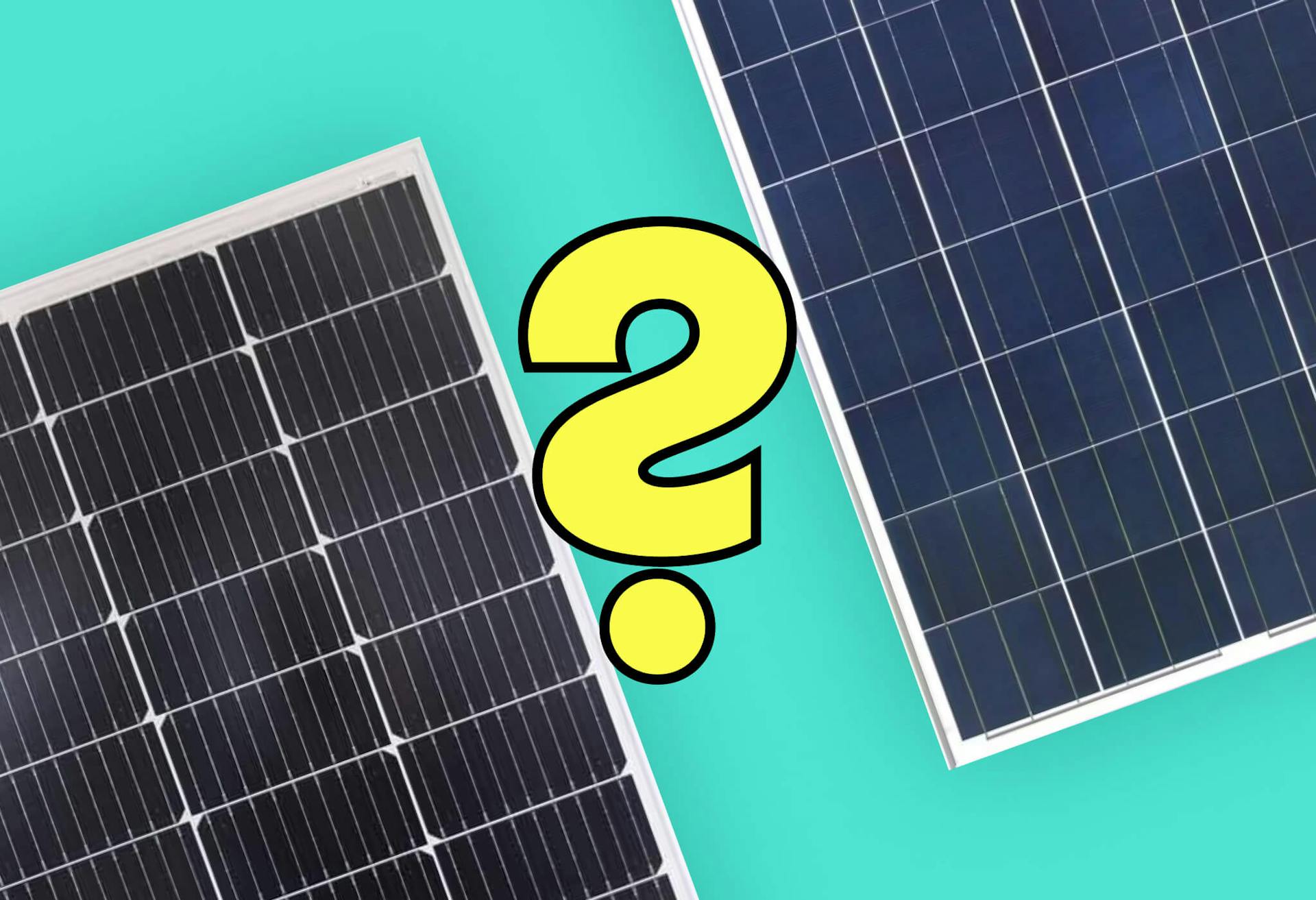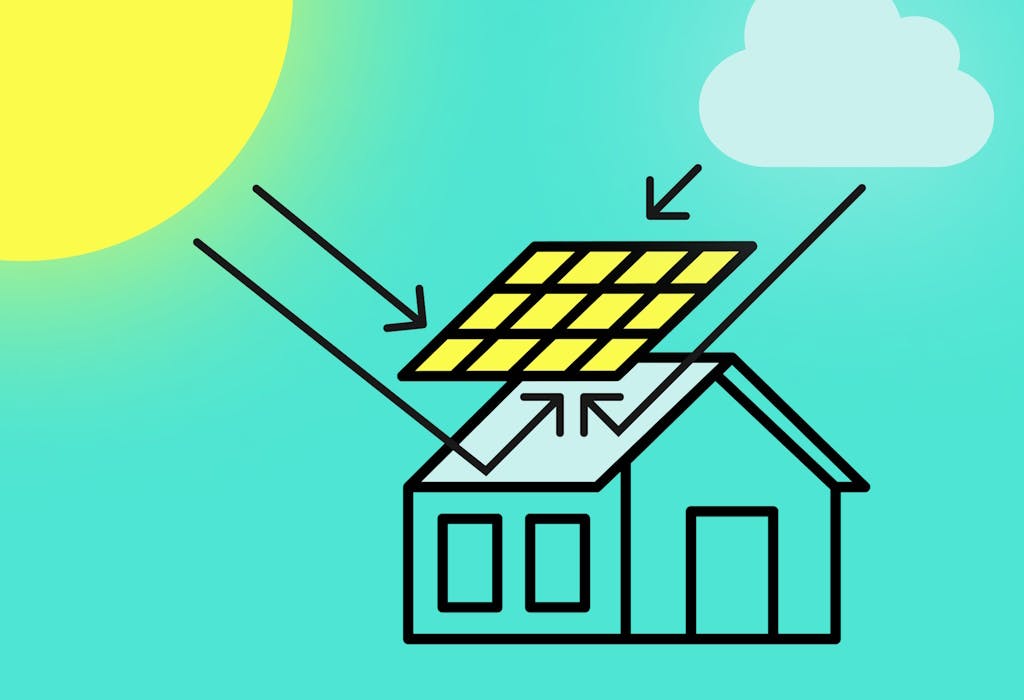- Solar advice hub
- Solar-technology
- Transparent solar panels: an expert guide
Transparent solar panels: an expert guide
'See-through' solar panels are an exciting new development in the world of solar, but are they all they're cracked up to be?


Why you can trust our content
We know that the solar industry is full of misinformation, but we only use reliable sources, including:
- Our experienced solar experts, installers and system designers
- Our own database of solar & battery system designs
- Authoritative bodies like MCS and the UK government




Calculate savings
What kind of home do you live in?
Calculate savings
What kind of home do you live in?
Transparent solar panels: at a glance
Transparent solar panels are a game-changer when it comes to combining aesthetics with clean electricity. These panels are designed to seamlessly become part of buildings, adding a stylish source of green energy.
But while their unique benefits are as clear as day, transparent solar panels come with other disadvantages - particularly in the case of efficiency.
In this article, we’ll run through the basics of transparent solar panels, whether they’re fully see-through, and whether they’re actually worth it.
At Sunsave, we install traditional solar panels. If you’re interested in switching to solar and want to find out how much a solar & battery system will save you, just answer a few quick questions below and we’ll provide an estimate.
Find out how much you can save
What kind of home do you live in?
What are transparent solar panels?
Transparent solar panels, also known as solar glass, are see-through photovoltaic (PV) technologies that can generate electricity from daylight.
Unlike traditional opaque solar panels, these panels allow a portion of visible light to pass through them, making them ideal for use as certain types of window, as well as skylights and building facades.
This technology is especially beneficial for urban environments, offering a sustainable energy solution that blends in with architectural designs.
Are they actually see-through?
Most transparent solar panels on the market aren't completely see-through - they typically have a slight tint.
Fully transparent versions have been successfully developed in lab settings, but these aren't yet widely available due to a severe lack of efficiency.
Allow us to explain.
Partially transparent solar panels
Partially transparent solar panels contain extremely thin slivers of crystalline (or thin-film) silicon photovoltaic (PV) material encased between layers of glass. Because of this glass casing, the thinness of the silicon, and the small gaps between the cells, a portion of light is able to pass completely through.
For instance, the transparent solar panels produced by PolySolar allow about 40% of visible light to pass through, whilst absorbing the other 60% and converting it into electricity.
This means that partially transparent solar panels fundamentally work in the same way as traditional solar panels.
You can buy partially transparent panels in a range of different colours and in slightly varying levels of transparency.
Fully transparent solar panels
Fully transparent solar panels differ from the partially transparent ones as they don't use standard PV cells, and literally look like panes of clear glass. Instead, they use transparent luminescent solar concentrators (TLSC), which consist of organic salts.
These organic salts capture the non-visible UV and IR light from the spectrum and redirect it to thin PV cells on the edge of the device, allowing visible light to pass through completely and making the panels fully see-through.
This technology has been developed by engineers in the University of Michigan, but currently it’s only about 1% efficient - so it has a long way to go.
How efficient are transparent solar panels?
Transparent solar panels currently have a much lower level of efficiency compared to standard monocrystalline solar panels, as manufacturers have to sacrifice a lot of power generation potential for the sake of transparency.
For instance, they’ll put small gaps between the solar cells, whereas normal solar panels would make maximise use of the space.
This means that transparent solar panels are not worth the investment if you’re looking to significantly cut your energy bills, especially when you consider the high cost of solar panels.
While monocrystalline panels can achieve average efficiency rates of around 18-24%, transparent solar panels are usually between 5-15%.

What are the types of transparent solar panel?
Transparent solar panels employ different technologies to balance transparency and electricity generation. Read on as we explore the three main types: crystalline cells, thin-film solar cells and TLSC.
Crystalline
Crystalline transparent solar panels use ultra-thin silicon wafers, similar to traditional monocrystalline or polycrystalline solar cells, but designed to be partially transparent. The panels have tiny gaps between the silicon cells, enabling some light to pass through.
While they maintain decent efficiency, they're not fully see-through and often have a tinted appearance. This makes them ideal in places where partial transparency is sufficient, like building facades.
Thin-film
Other transparent solar panels use thin-film materials like amorphous silicon, cadmium telluride or copper indium gallium selenide, applied in ultra-thin layers on a transparent base. These layers are so thin that they allow partial light transmission, resulting in a semi-transparent look.
TLSC
As we briefly mentioned above, transparent luminescent solar concentrators (TLSC) use organic molecules to capture UV and IR light, while allowing visible light to pass through completely.
These salts re-emit the captured light as a different type of infrared light, which is then directed to the edges of the panel where ultra-thin traditional PV cells convert it into electricity.
TLSCs are fully transparent and work as direct replacements for normal windows, however they currently have such low efficiency that they aren’t yet worth installing.
At Sunsave, we install traditional solar panels. If you’re interested in switching to solar and want to find out how much a solar & battery system will save you, just answer a few quick questions below and we’ll provide an estimate.
Find out how much you can save
What kind of home do you live in?
What are transparent solar panels used for?
Transparent solar panels are versatile and have various applications, including:
- Skylights
- Decorative building facades
- Privacy windows and rain screens
- Canopies
- Curtain walls
- Greenhouses
- Barn roofs
- Bus stops
- Bike shelters
Given that usable transparent solar panels aren’t actually fully see-through, they’re rarely used in the place of actual windows, as you’d end up with something far less useful.
However, there are lots of contexts where something slightly see-through is suitable, particularly on the top of structures that need some natural light to come in, but aren’t ever something that people need to look through.
This is why the majority of applications of transparent solar panels are on things like bus stops, building facades, bike shelter roofs, and skylights.
Can you buy transparent solar panels in the UK?
There are only a handful of companies in the UK that install transparent solar panels, as it’s still a relatively new and unknown technology.
Polysolar specialises in transparent solar glass for building integration. They use thin-film PV technology to create semi-transparent panels that can be used for canopies, facades and skylights.
Precision Glass offers ClearShade PV solar panels, which feature a specialist printed interlayer to meet different shading and transparency requirements. These panels work in both direct and non-direct sunlight, making them versatile for new-build projects.
NewFrame provides solar glass solutions that can be used in windows, facades, and other building features with the aim of enhancing the visual appeal of structures.
Examples of transparent solar panels in the UK
Transparent solar panels are gaining traction in the UK, with several innovative examples showcasing their potential for residential homes and public infrastructure.
Here are a few specific examples in more detail.
Canopies for car and cycle parks
Sainsbury's petrol stations in Bishop’s Waltham, Leicester and Weymouth all feature a canopy with integrated transparent solar glass, providing both shelter and renewable electricity generation.
Similarly, the Cambridge North railway station cycle park incorporates transparent solar panels in its canopy.
Curtain walls
Curtain walls are typically used on buildings to provide a non-structural exterior covering that helps protect the interior. To increase building energy efficiency, developers are integrating transparent solar panels into these features.
For instance, the Gloucestershire County Council Hall refurbishment included a new curtain wall with over 380 solar glass panels. Similarly, the Future Business Centre in Cambridge adopted transparent solar panels in its curtain walls.
Canopies in gardens
Homes across the UK are using transparent solar panels for their garden canopies, making them both useful and eco-friendly.
Applications include a semi-transparent solar glass canopy over a pond and an oak frame canopy for a patio area, integrating renewable technology naturally to provide shade as well as electricity generation for the home.
There are also examples of transparent solar panels being used as greenhouse roofs, offering an innovative way to power garden activities while allowing sunlight for plant growth.
Are transparent solar panels worth it?
Transparent solar panels are a great way to discreetly add solar technology to buildings without compromising their appearance - though they're significantly less efficient than traditional solar panels.
If you're trying to significantly cut down your electricity bills, using solar glass may not be the best idea, especially for covering a rooftop. Instead, your best bet is to use traditional panels for their far superior efficiency, reliability and durability.
At Sunsave, we install traditional solar panels. If you’re interested in switching to solar and want to find out how much a solar & battery system will save you, just answer a few quick questions below and we’ll provide an estimate.
Find out how much you can save
What kind of home do you live in?
Transparent solar panels: FAQs
Related articles

Written byMelody Abeni
Based in London, Melody is a specialist green technology writer who has been covering sustainability, climate action and ESG for the past five years, after gathering operational experience in green investing and financial services. She has written for various industry publications, including renewable technology advisor The Eco Experts, and she holds a Master’s degree in law from Birkbeck University.



